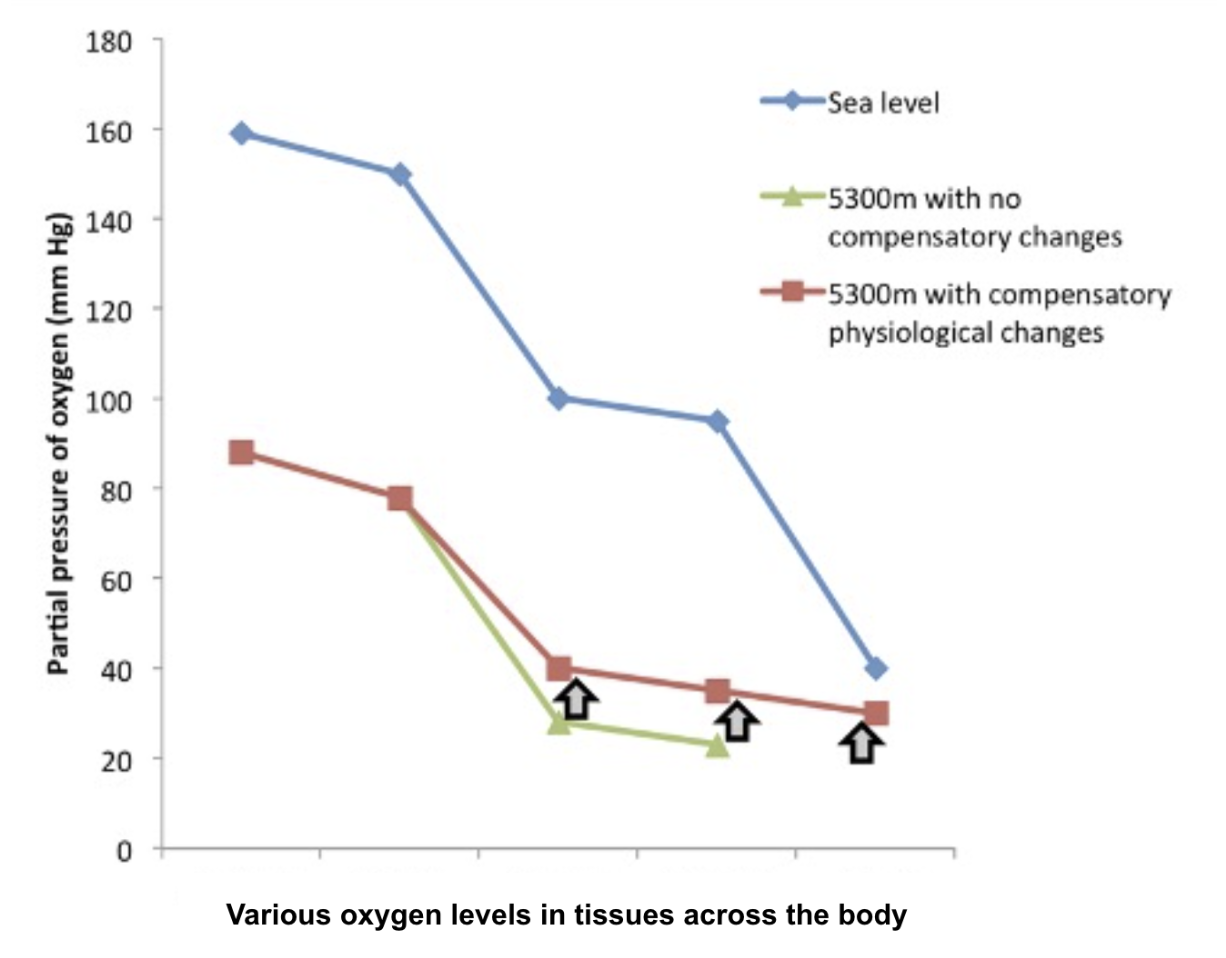For decades, altitude training has been hailed as a performance booster for endurance athletes. But while many embrace the concept, few truly understand the complex physiological changes that occur at high elevations. The reality? Success at altitude isn’t just about training harder, it’s about understanding and tracking the right biomarkers to support optimal adaptation.
The Altitude Effect: What Happens to Your Blood?
The moment you arrive at altitude, your body senses the lower oxygen levels and begins adapting to maintain performance. One of the most important changes is an increase in hemoglobin concentration, which allows your blood to carry more oxygen. This happens in two stages. First, plasma volume drops (you lose some fluid), concentrating the blood. Next, red blood cell production ramps up and is driven by a hormone called erythropoietin (EPO), which is triggered by low oxygen.

Source: Adapted from Houston, S., & Smith, J. University of Alberta.
These changes are essential because most oxygen in the body is carried by hemoglobin, not dissolved in the blood. Shown in the figure above, the body adapting to increase hemoglobin concentration helps compensate for reduced oxygen availability in the air, ensuring the body can continue to meet performance demands. Without an increase in hemoglobin, oxygen delivery to the muscles during training would fall by as much as 20%, seriously impacting endurance and recovery.
By increasing hemoglobin, the body can be trained to maintain nearly the same total oxygen content at altitude as it does at sea level, but only if adaptation occurs properly. That’s why monitoring these internal changes is key: it helps tailor altitude exposure, avoid overtraining, and ensure athletes get the full performance benefit.
But adaptation isn’t one-size-fits-all. Studies show individual responses to altitude can vary by up to 50% - meaning what works for one athlete may be completely ineffective for another. The key to unlocking altitude benefits? Real-time blood monitoring.
The Three Phases of Altitude Adaptation
- Initial Response (Days 1–3): Plasma volume drops by around 15%, making the blood more concentrated and enhancing oxygen transport efficiency. However, this also increases heart rate and perceived exertion - requiring careful training adjustments.
- Middle Phase (Days 7–14): EPO production spikes, triggering an increase in red blood cell production. This is a critical window for adaptation, but also when athletes are most vulnerable to overtraining. Without tracking hemoglobin mass, it’s easy to miss the balance between stress and recovery.
- Final Phase (Beyond Day 14): Your body begins consolidating the benefits of increased Hbmass. The right recovery strategies during this period ensure long-term gains, while improper management can result in fatigue and minimal adaptation.
Why It’s Important to Track More Than Just Performance Metrics
Altitude training affects more than just perceived effort or external performance outputs. The internal, biological changes, especially those related to blood composition, are critical to understanding how well someone is adapting to altitude and how to tailor their training accordingly.
Key blood biomarkers include:
- Hemoglobin mass (Hbmass) change from baseline (%):
A key indicator of the body’s capacity for oxygen transport and one of the most reliable long-term markers of adaptation. - Hematocrit (HCT) change from baseline (%):
Reflects the proportion of red blood cells in the blood, which can indicate either productive adaptation or dehydration-related concentration shifts. - Red Blood Cell count (RBC):
Measures the total number of oxygen-carrying cells. Increases typically correspond with enhanced aerobic performance potential. - Plasma Volume change from baseline (%):
Helps assess hydration status and early changes in blood concentration following altitude exposure. - Reticulocyte proportion change from baseline (%):
Represents the percentage of immature red blood cells in circulation, providing insight into the rate of new red blood cell production.
Monitoring these biomarkers enables a more accurate understanding of an athlete’s physiological state and helps in making informed decisions about training load, recovery, and altitude exposure duration.
The Future of Altitude Training
Traditional altitude training often relied on subjective feedback and trial-and-error approaches. In contrast, modern training increasingly depends on data-driven methods to inform personalized protocols. Some high-performance training centers have already implemented daily monitoring of blood biomarkers to refine altitude training with greater precision.
By tracking changes in hemoglobin mass and related indicators over time, athletes and coaches can more effectively time altitude exposure, optimize workloads, and reduce the risk of overtraining. This shift toward individualized, biology-informed training marks a significant advancement in how we approach endurance performance in hypoxic environments.
